Knee
Arthritis of Knee Joint
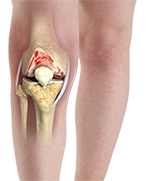
Arthritis is a general term covering numerous conditions where the joint surface or cartilage wears out. The joint surface is covered by a smooth articular surface that allows pain free movement in the joint. This surface can wear out for a number of reasons; often the definite cause is not known.
Knee ‘Keyhole’ Surgery (arthroscopic surgery)
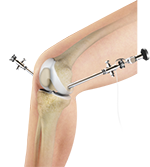
Keyhole surgery in the knee allows internal assessment of the knee. Two small portals are made either side of the knee, allowing a fibre-optic camera to be passed into the knee and an instrument to carry out any necessary work. This procedure has both a diagnostic and therapeutic value. It allows; cartilage flaps to be debrided (chondroplasty), microfracture, removal of loose fragments, meniscal work, ligament reconstruction, removal of pathological plicae and assessment of wear and tear within the knee.
Cartilage Injuries
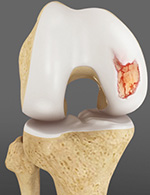
Cartilage lines the bony surfaces in a joint. Its main function is to reduce wear and act as a cushion to help in the distribution of forces within a joint. It can become damaged through an injury or a predisposing factor such as lower limb mal-alignment.
Meniscal injuries
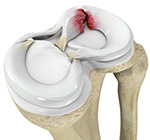
The knee has two C-shaped cushions that act as shock absorbers called menisci. They are located in-between the thigh bone (femur) and lower leg bone (tibia). They are at risk of injury and can lead to symptoms such as pain, locking, catching, giving-way and knee swelling
Ligament Reconstruction
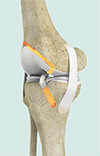
The knee has an anterior and posterior cruciate ligament that act as stabilisers of the knee. These can be injured leading to the symptoms of instability, giving way and swelling. Patients often experience a ‘popping’ sensation and immediate swelling in the knee. Once the Anterior cruciate ligament is torn it does not heal, but some patients are able to carry on in their daily activities without any trouble. However some patients struggle with pivoting activities with the knee giving-way and this can in turn lead to secondary damage in the knee. If the knee is unstable then the anterior cruciate ligament can be reconstructed with a hamstring/patella tendon graft. Mr Patel does an anatomic reconstruction via ‘key-hole’ surgery, giving you the best chance to return to sporting activities, and this is done as a day-case procedure. All patients following anterior cruciate ligament injury benefit from specialised physiotherapy to help regain knee stability.
Knee Realignment Surgery
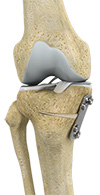
Some individuals are predisposed to developing arthritis in their knee joints due to the shape of their lower limbs. They may appear ‘Bow-legged’ or ‘Knock-kneed,’ and the rate of wear and tear is accelerated due to the presence of this deformity. The lower limb can be realigned, by cutting the bone and correcting the deformity. This will help unload the painful part of the knee. This procedure is called an ‘osteotomy’ and can be performed on the thigh bone or the lower leg bone depending upon where the deformity is. This form of surgery allows you to keep your own knee for longer and hopefully maintain a more active lifestyle.
Patellofemoral Realignment Surgery
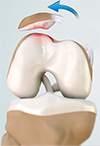
Some patients suffer with knee-cap dislocations following an injury. The nature of the injury may have been trivial and it unmasks a predisposing factor to knee cap instability. Some individuals are very flexible and have lax ligaments thus putting them at risk for further knee-cap dislocations. Others may have an abnormally high patella or a shallow ‘trochlea,’ which is the groove in which the patella sits. A careful root cause analysis needs to be performed and treatment plan tailored appropriately. Treatments vary from physiotherapy to patellofemoral ligament reconstruction and tibial tubercle osteotomy (the insertion of the patella is realigned to improve patella tracking).
Knee Replacement Surgery
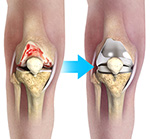
The knee is made up of the femur (thigh bone), the tibia (shin bone), and patella (kneecap). The meniscus, the soft cartilage between the femur and tibia, serves as a cushion and helps absorb shock during motion. In the presence of arthritis, where the cartilage has worn out, the knee can become very painful with symptoms of giving way, stiffness and swelling.
Unicompartmental Knee Replacement
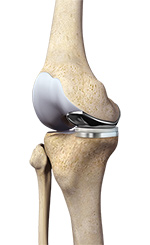
There are 3 compartments within the knee and arthritis may be limited to one of these compartments. In such instances patients may be appropriate for unicompartmental knee replacement surgery. The advantages of this form of knee replacement surgery are it is more minimally invasive and it has been shown that patients can recover faster from this procedure with a better range of movement and reduced blood loss. However not all patients are suitable for this form of surgery and the knee arthritis may start to effect the other compartments with time. The long term results following partial knee replacement are good and equivalent with those for total knee replacement surgery. Mr Patel performs both partial and total knee replacement surgery and is thus in a position to perform an operation suitable for an individual’s needs.
